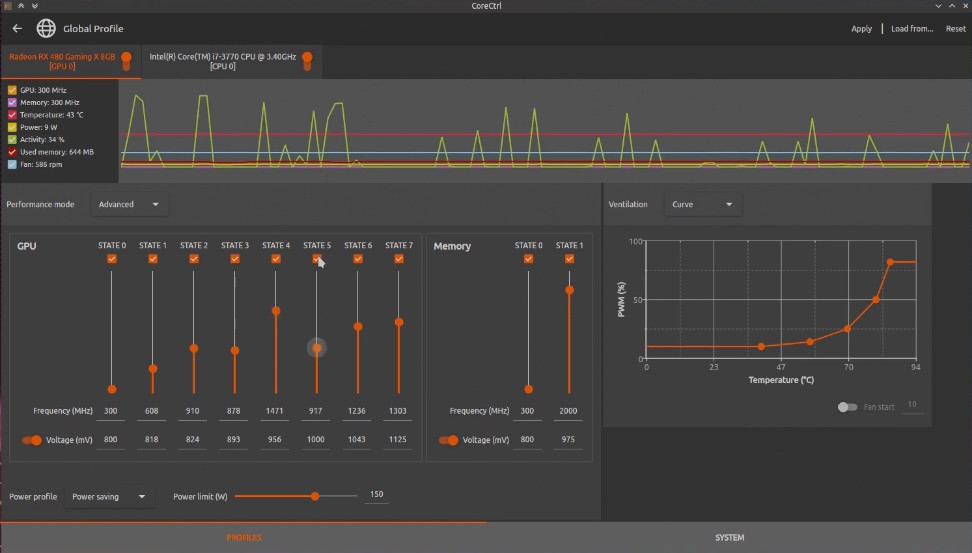

- #Ati drivers for ubuntu how to
- #Ati drivers for ubuntu install
- #Ati drivers for ubuntu driver
- #Ati drivers for ubuntu full
- #Ati drivers for ubuntu series
That way the commands will be in your terminal history.

Another good idea is to perform the two above copy command before you modify nf. When you restart your machine you should be able to recover quickly by simply restoring your nf file. The information below was written about pre-9.10 versions of Ubuntu, but can be analogous information for newer versions still applies: In newer versions of Ubuntu, +=F3 now takes you back to your graphical user interface. If you pressed ++F1 to F6 you would go into a terminal screen and then if you were to press ++F7 you would return to your graphical user interface. F7 was the first x-window, F8 the second, F9 the third, etc.
#Ati drivers for ubuntu full
In older versions of Ubuntu, F1 to F6 were full screen terminals like the old terminals.
#Ati drivers for ubuntu driver
Things do go wrong as you try to optimize your graphics driver and monitors.Īlso it helps if you become familiar with ++F1 and similar key combinations. While care is taken by your fellow user to ensure that everything will work, it is more often than not likely the case. To revert to the backup you simply reverse the order like this sudo cp /etc/X11/ /etc/X11/nfīefore you start modifying your directory or nf file, it is strongly suggested you print out this page. In older versions of Ubuntu (through 9.10), the nf configuration file can be found in the /etc/X11 directory. If you want to generate an old-style nf, you can boot into recovery mode, select root shell, and do:Ĭp /root/ /etc/X11/nf Many of the configurations settings in use aren't explicitly set by the files in this directory, but are rather hard-coded into the system. In Ubuntu, the X configuration directory can be found at /usr/lib/X11/. This section focuses on the video card and monitor set-up. The directory (or nf file for older versions of Ubuntu) is the place that stores the configuration information for your input devices and output devices, such as video cards and monitors, as well as mice, keyboards, and tablets.
#Ati drivers for ubuntu how to
Multiple monitors with NVIDIA - how to enable dual screens with the NVIDIA driverįor additional troubleshooting resources, please also see the Ubuntu X Team wiki
#Ati drivers for ubuntu install
Nvidia manual drivers installation - How to install the Nvidia accelerated drivers without apt Nvidia TV Out - View X simultaneously on your monitor and TV Nvidia Troubleshooting - How to solve OpenGL Problems with NVIDIA Drivers Nvidia - How to install both the latest driver and the one in the repositories (also includes a detailed Problems Section)
#Ati drivers for ubuntu series
Radeon_9200/9250_(RV280)_and_DVI - How to get DVI output working with ATI RV280 series video cards NvidiaManual - How to manually install the NVIDIA restricted drivers If you have a Matrox based video card, you can also try the pages at the Unofficial Matrox Technical Support Forum Here are some useful links and related pages.īinaryDriverHowto/DynamicMultiMonitor - How to dynamically set multiple monitor resolution. Note:In Ubuntu 10:10 Hardware Drivers is now named Additional Drivers In Ubuntu 10.04 and 9:10 this is found under System->Administration->Hardware Drivers. The easiest way to install binary drivers is to use the built in Hardware Drivers manager in Ubuntu. More detailed information can be found by running sudo lshw -C videoįor a list of supported video cards, please see. To determine your video card make and model, run this command from terminal: lspci | grep VGA If you encounter bugs with these closed-source drivers, developers will not be able or even willing to assist you in resolving your issues.

This is changing however, with the advent of gallium implementations. The disadvantages are that the Open Source drivers sometimes do not provide full support for all of the video card's features.The advantages of using the Open Source drivers are that they are community supported and bugs can be fixed by the community programmers. These types of drivers are usually licensed with the GPL and we can use these drivers freely.In some cases, there is no proprietary driver for the graphics card (such as non-HD Radeons) and installing such a driver will only prevent the Open Source driver from functioning correctly. In addition, older hardware is typically better supported by Open Source drivers. Open Source drivers have been created by the Linux community to function with certain video cards, and most video cards have an Open Source driver available. Please note There are two types of drivers that we can use: Open Source and Proprietary drivers. This guide and its subpages describe the driver situation in ubuntu and how to install proprietary binary/restricted drivers where open source drivers are not available.How to recover a non-booting system due to driver malfunction.More Detailed Installation Instructions.


 0 kommentar(er)
0 kommentar(er)
